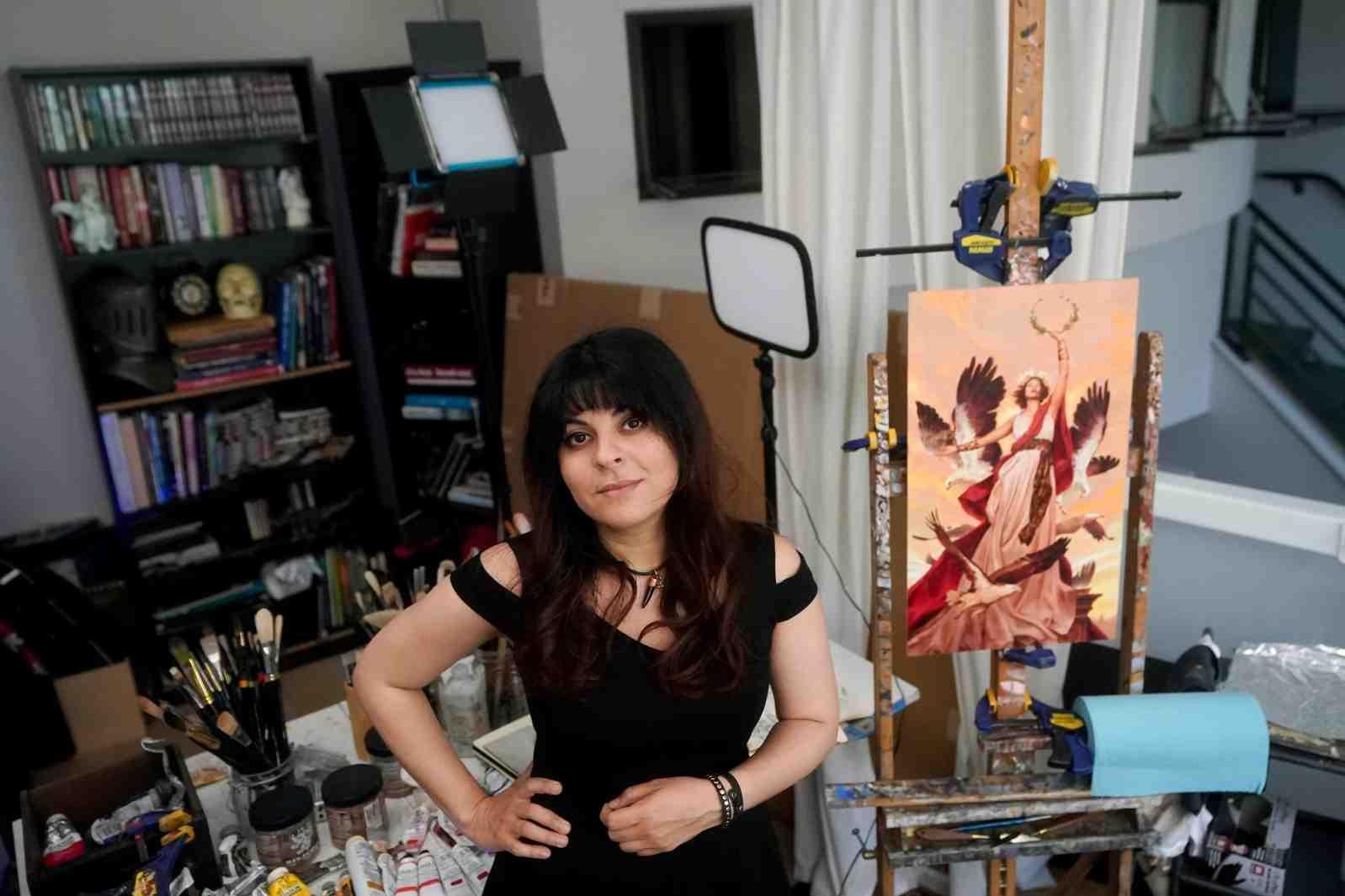
Kelly McKernan’s acrylic and watercolor paintings are bold and vibrant, often featuring feminine figures rendered in bright greens, blues, pinks and purples. The style, in the artist’s words, is “surreal, ethereal … dealing with discomfort in the human journey.”
The word “human” has a special resonance for McKernan these days. Although it’s always been a challenge to eke out a living as a visual artist — and the pandemic made it worse — McKernan now sees an existential threat from a medium that's decidedly not human: artificial intelligence.
It’s been about a year since McKernan, who uses the pronoun they, began noticing online images eerily similar to their own distinctive style that were apparently generated by entering their name into an AI engine.
The Nashville-based McKernan, 37, who creates both fine art and digital illustrations, soon learned that companies were feeding artwork into AI systems used to “train” image-generators — something that once sounded like a weird sci-fi movie but now threatens the livelihood of artists worldwide.
“People were tagging me on Twitter, and I would respond, ‘Hey, this makes me uncomfortable. I didn’t give my consent for my name or work to be used this way,'” the artist said in a recent interview, their bright blue-green hair mirroring their artwork.
McKernan is now one of three artists who are seeking to protect their copyrights and careers by suing makers of AI tools that can generate new imagery on command.
The case awaits a decision from a San Francisco federal judge, who has voiced some doubt about whether AI companies are infringing on copyrights when they analyze billions of images and spit out something different.
“We’re David against Goliath here,” McKernan says. "At the end of the day, someone’s profiting from my work. I had rent due yesterday, and I’m $200 short. That’s how desperate things are right now. And it just doesn’t feel right.”
The lawsuit may serve as an early bellwether of how hard it will be for all kinds of creators — Hollywood actors, novelists, musicians and computer programmers — to stop AI developers from profiting off what humans have made.
The case was filed in January by McKernan and fellow artists Karla Ortiz and Sarah Andersen, on behalf of others like them, against Stability AI, the London-based maker of text-to-image generator Stable Diffusion. The complaint also named another popular image-generator, Midjourney, and the online gallery DeviantArt.
The suit alleges that the AI image-generators violate the rights of millions of artists by ingesting huge troves of digital images and then producing derivative works that compete against the originals.
The artists say they are not inherently opposed to AI, but they don't want to be exploited by it. They are seeking class-action damages and a court order to stop companies from exploiting artistic works without consent.
Stability AI declined to comment. In a court filing, the company said it creates "entirely new and unique images” using simple word prompts, and that its images don’t or rarely resemble the images in the training data.
“Stability AI enables creation; it is not a copyright infringer,” it said.
Midjourney and DeviantArt didn't return emailed requests for comment.
Much of the sudden proliferation of image-generators can be traced to a single, enormous research database, known as the Large-scale Artificial Intelligence Open Network, or LAION, run by a schoolteacher in Hamburg, Germany.
The teacher, Christoph Schuhmann, said he has no regrets about the nonprofit project, which is not a defendant in the lawsuit and has largely escaped copyright challenges by creating an index of links to publicly accessible images without storing them. But the educator said he understands why artists are concerned.
“In a few years, everyone can generate anything — video, images, text. Anything that you can describe, you can generate it in such a way that no human can tell the difference between AI-generated content and professional human-generated content,” Schuhmann said in an interview.
You could hear the fury in the voice of Ortiz, also 37, of San Francisco, a concept artist and illustrator in the entertainment industry. Her work has been used in movies including “Guardians of the Galaxy Vol. 3,” “Loki,” “Rogue One: A Star Wars Story,” “Jurassic World" and “Doctor Strange." In the latter, she was responsible for the design of Doctor Strange’s costume.
“We’re kind of the blue-collar workers within the art world,” Ortiz said in an interview. “We provide visuals for movies or games. We’re the first people to take a stab at, what does a visual look like? And that provides a blueprint for the rest of the production.”
But it’s easy to see how AI-generated images can compete, Ortiz says. And it’s not merely a hypothetical possibility. She said she has personally been part of several productions that have used AI imagery.
“It’s overnight an almost billion-dollar industry. They just took our work, and suddenly we’re seeing our names being used thousands of times, even hundreds of thousands of times."